20th Anniversary Trip to Egypt - Edfu, Philae & Abu Simbel
- Gizo & Cairo - Luxor & Karnak - Hatshepsut Temple & Valley of the Kings - Edfu, Philae & Abu Simbel -
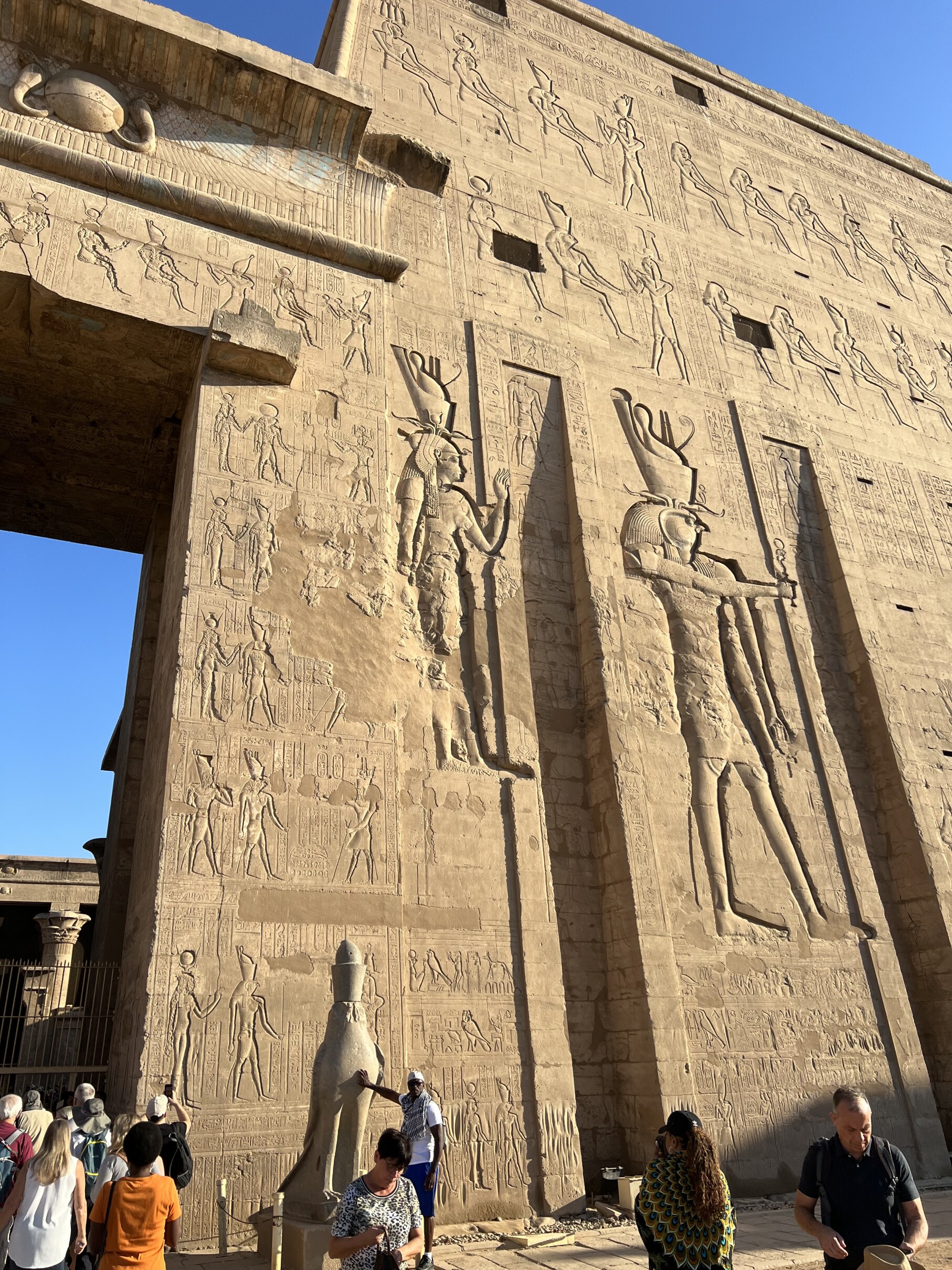
Though a formidable temple, I was going sit out the tour of Edfu, but fortunately did not. As ancient Egyptian sites go, the Temple of Horus at Edfu is comparatively modern. It was built between 237BCE and 57BCE by Ptolemy III, a "Greek Pharaoh" (a term I still struggle with). Edfu is very important because of its state of preservation, particularly its heiroglyphs; and it illustrates the extent to which the ancient Greeks identified with all things Kemetic, a fact that 100-plus years of scholarship in Egyptology has toiled mightily to reinterpret or refute.
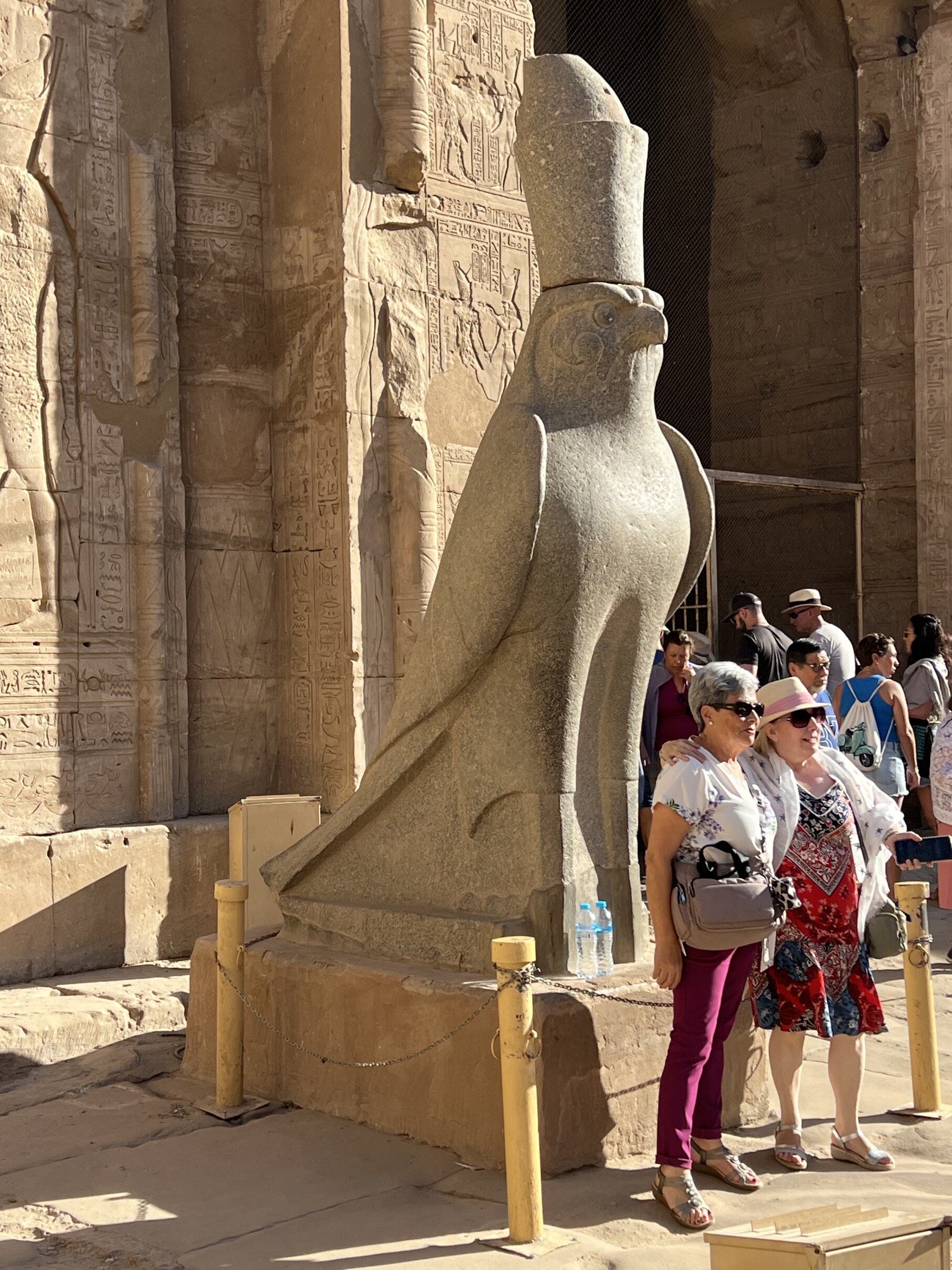
Edfu is more interesting to me at least, for its history and hieroglyphs than perhaps any architectural distinction. In any case it was in the temple courtyard that I discovered tourism's analog for driving slow in the left lane; i.e., people taking forever to pose in front of the most iconic and best preverved monuments to take selfies. I get it, but a selfie EVERYWHERE, and taking all day to take the shot? So-o-o-o friggin annoying. There were two of these Sphinxes of Horus in front of the temple, and this was the lone undamaged one. Everyone in this group wanted a photo, on everyone's friggin phone... I just gave up...
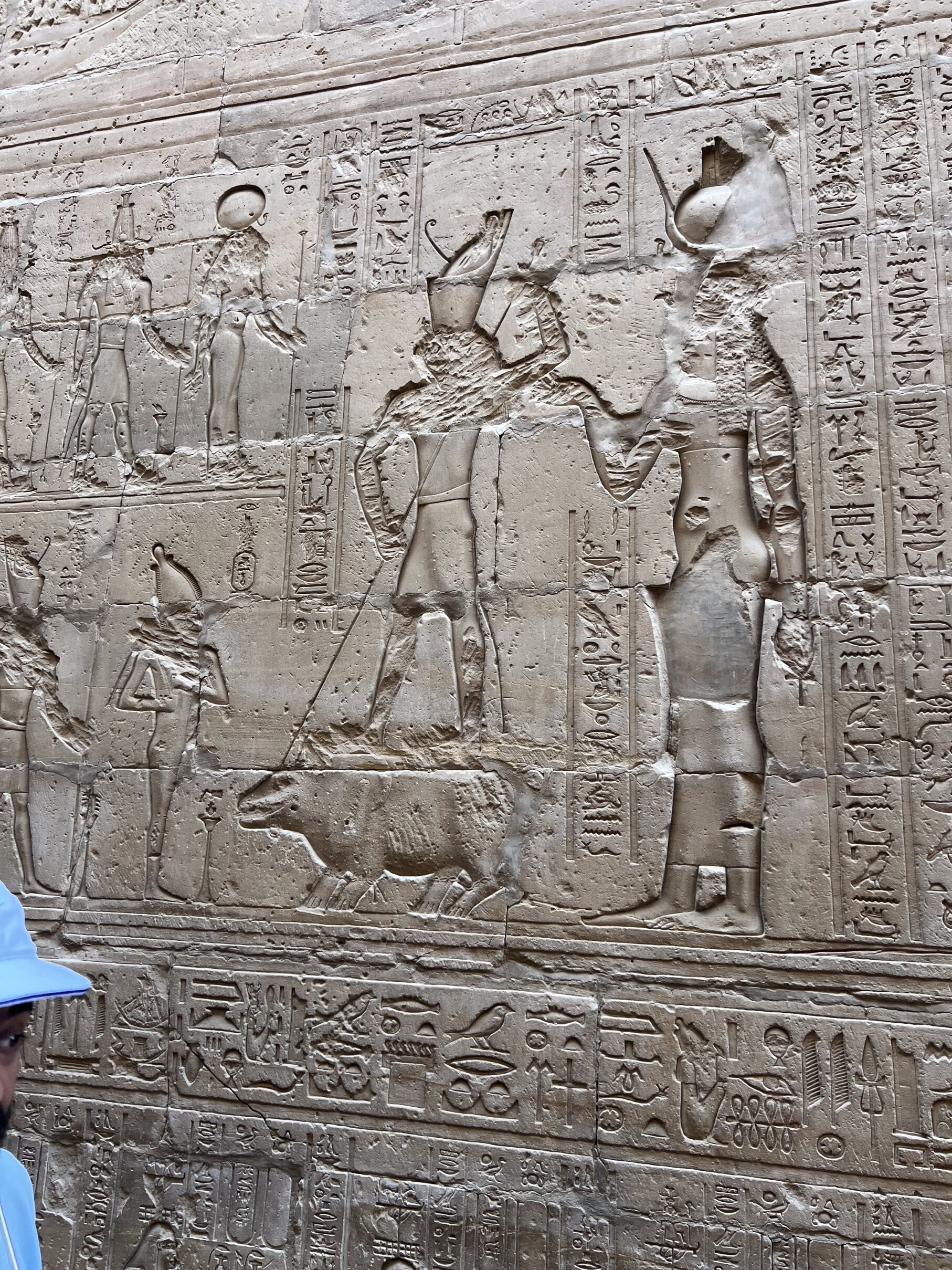
It's likely not terribly interesting as a photo, but our guide's schoarly knowledge of Egyptian language allowed him to explain the politics behind the ancient vandalism that resulted in the queen (personified here as Hathor), and other figures being erased from the wall. Fortunately, the names often remain in the hieroglyphs. Edfu was also notable for the state of preservation of the hieroglyphs.

This hieroglyph prompted an Internet viral non-event when it was claimed to be evidence that ancient Egyptians had WiFI. Popular nonsense aside, it illustrates the extraordinary level of detail in the hieroplyphs at Edfu. The stories told in these hieroglyphs document the extent to which the Greeks of this era embrace Egyptian religion and wanted to be Egyptian. Unfortunately, artifacts from the Ptolemic period have been conflated with much earlier, seminal periods of ancient Egyptian science, culture and monument building.
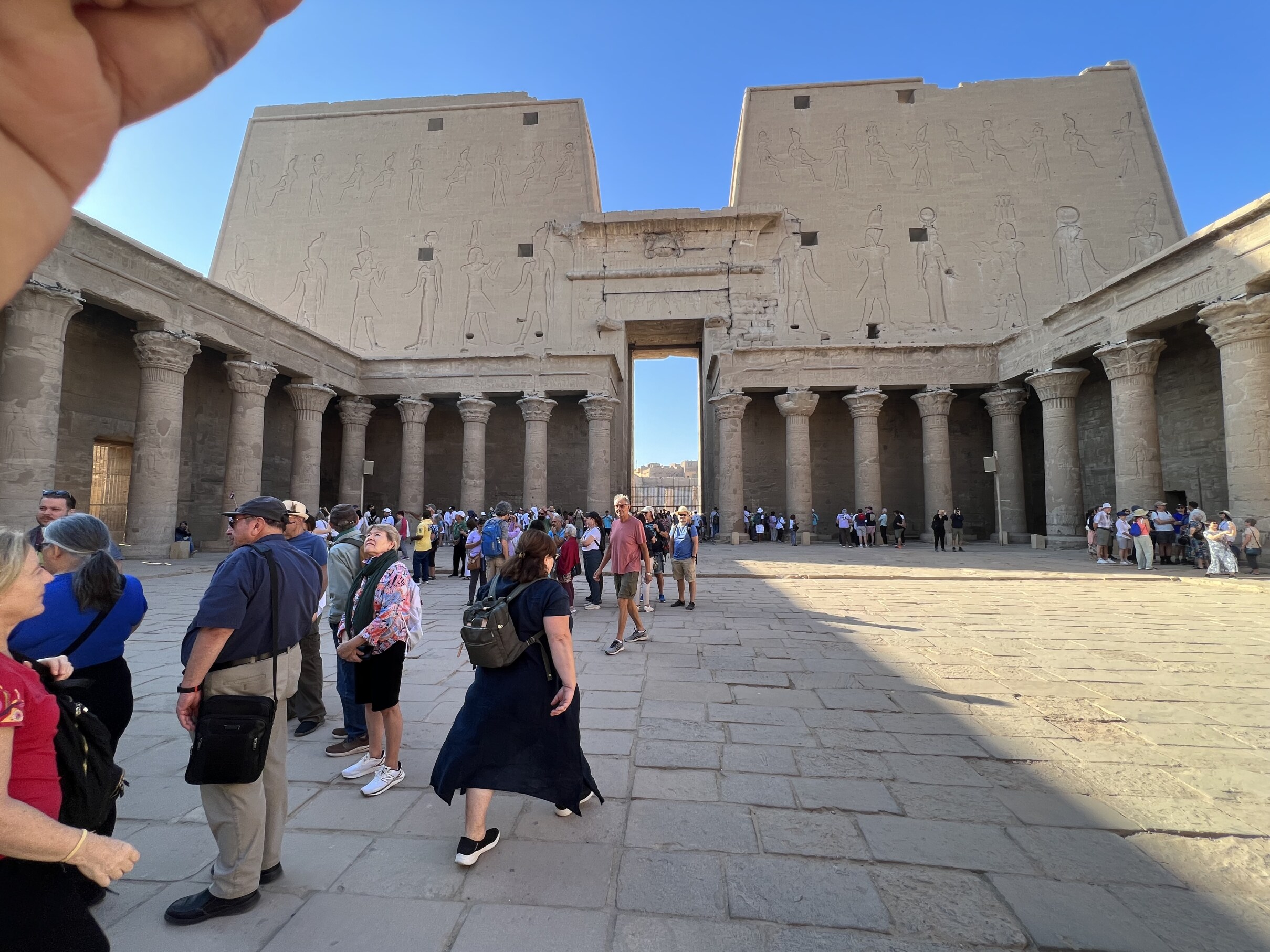
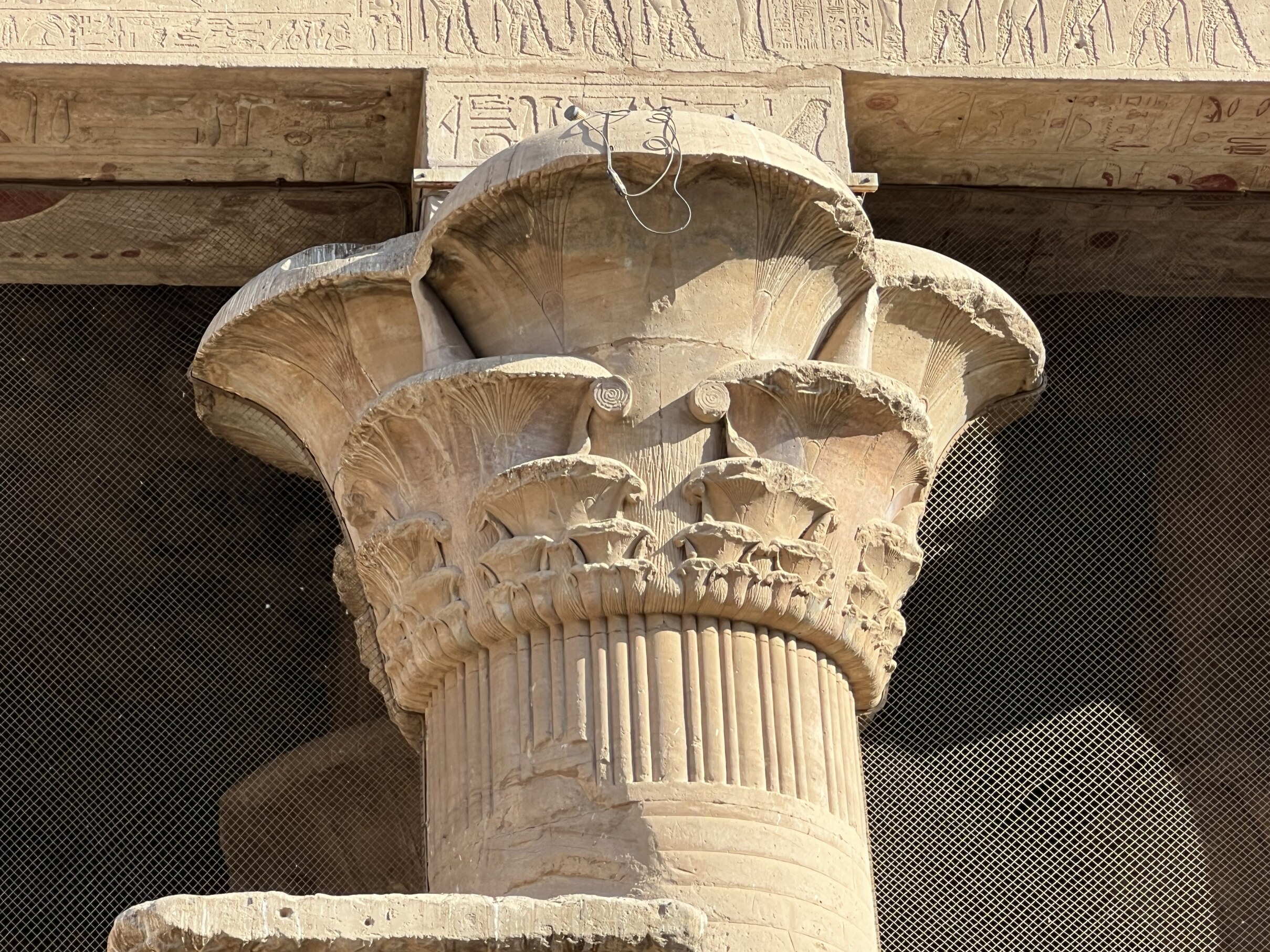
For all of its importance to modern architecture, the inventors of the ubiquitous column and capital are today given short shrift for having devised it.
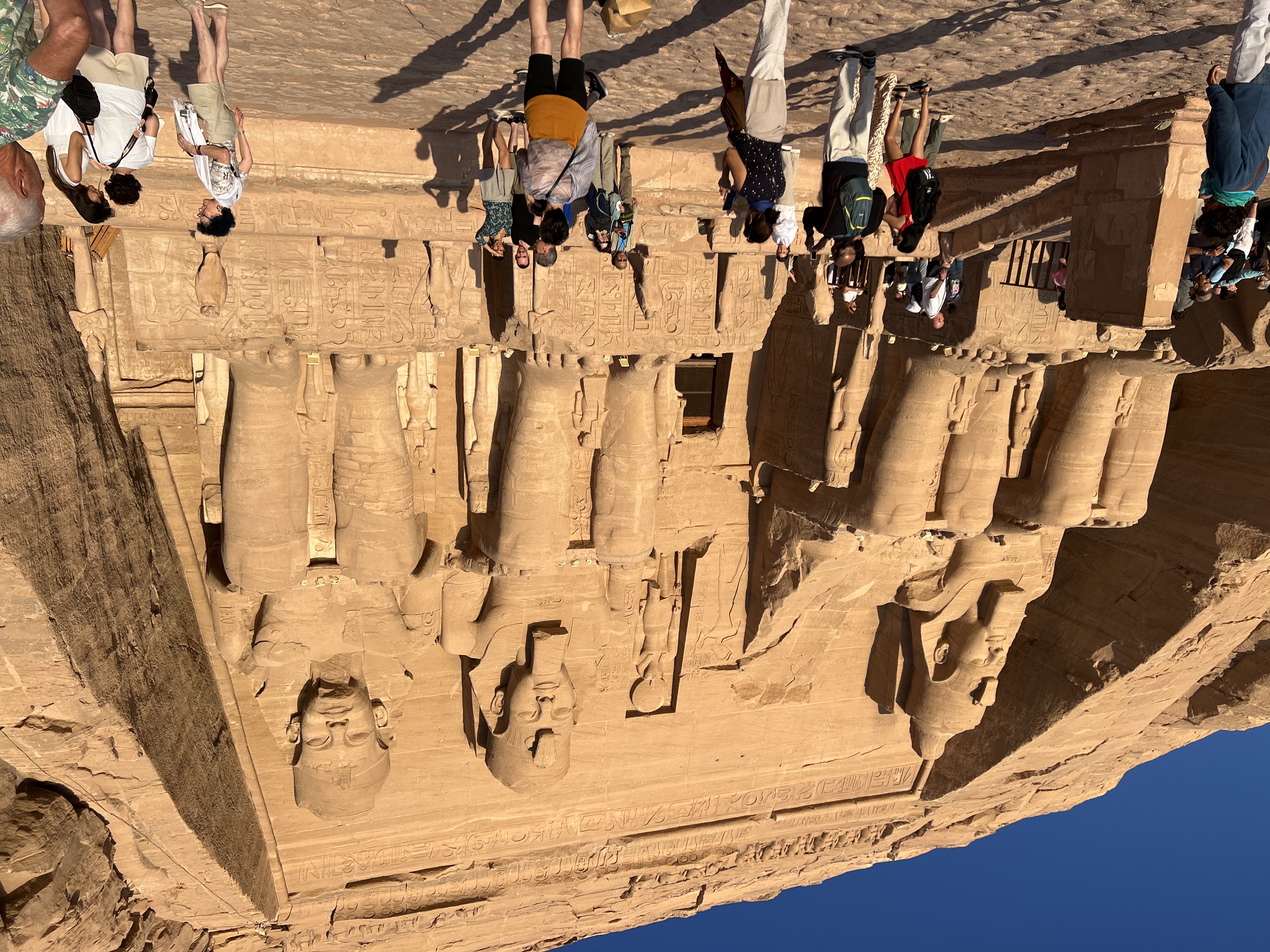
Moving on to Abu Simbel: for me, to stand at the feet of the collossi of Ramsesses II was a childhood dream realized. This photo comes close to conveying the temple's imposing splendor, but I would have needed camera equpment and post processing expertise I don't have. The Temple complex of Ramesses II and Queen Nefertari is named "Abu Simbel" after the Egyptian local who, when asked about the place, led the first European to it. The four collossi of Ramesses II portray hin, from left to right, as a young man, and at progressiveely later stages of life, on to old age at the far right. The toppled collosus was felled by an earthquake.
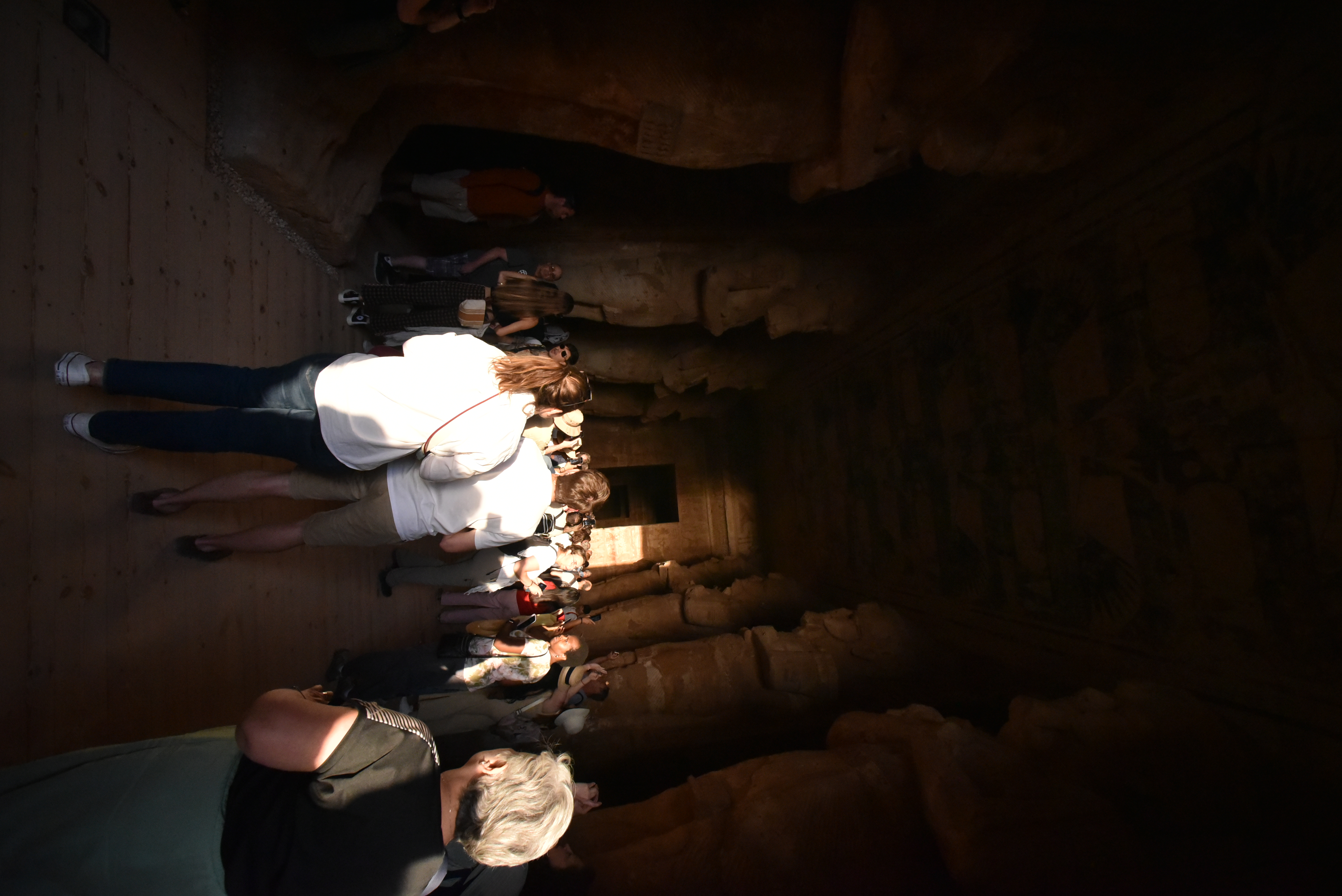
We'd made the hours long trek by bus to Abu Simbel just days after the Sun breached the innermost chamber of the now misaligned Temple of Ramesses II on October 22nd. Fun Fact: It's popularly said that the misalignment of Abu Simbel is due to miscalculations made when the temple was relocated in 1964-68 to avoid being flooded by a rising Lake Naser. In my reading about this, I believe the Sun enters the Holy of Holies a day later than orginally designed not due to human error, but because the monument is more than 3,000 years old, and astronomical factors, i.e., the progression of the equinoxes over time.
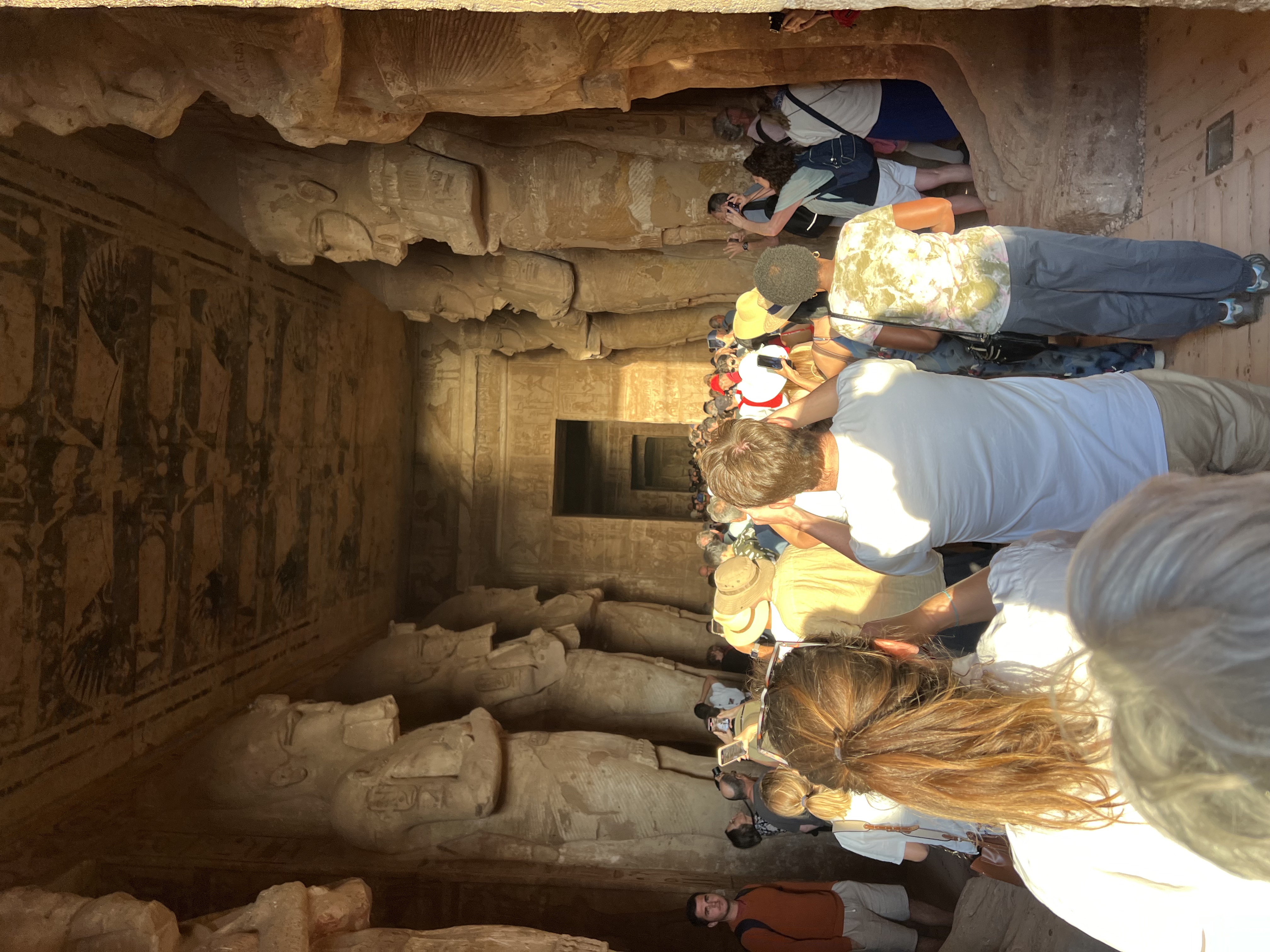
The throngs of visitors at all the sites in Egypt were reminiscent of the Forbidden City in summer, but not as bad as during Egypt's peak tourist season I'm told.

The Sun's rays were just a few degrees off, as we were a few days before the pharaoh's coronation, October 22nd, and October 23rd, the date of solar alignment nowadays. We would also have to have arrived at daybreak, ...a huge thrill for me nonetheless.
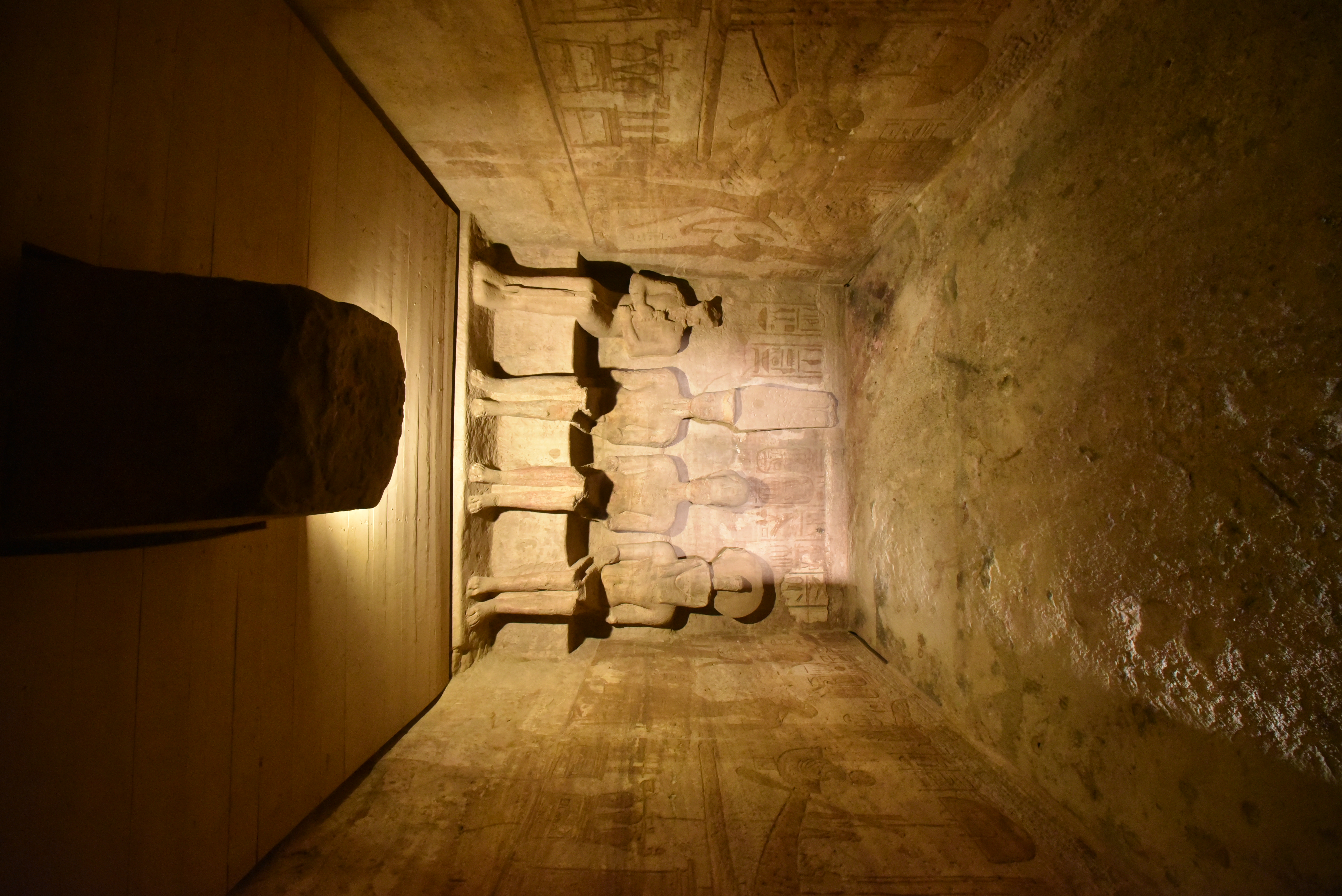
The innermost, holy of holies...

The bas reliefs in this temple, of Ramesses II conquering the Hittites and assorted foes are renowned. Our guide who was quite amazing, Dr. Mohammad Zizo, pointed out that in this relief Ramesses II is pictured driving his chariot, while aiming and drawning his bow from BEHIND his head, so to show his skill as a warrior. The dude was decidedly bad-ass.
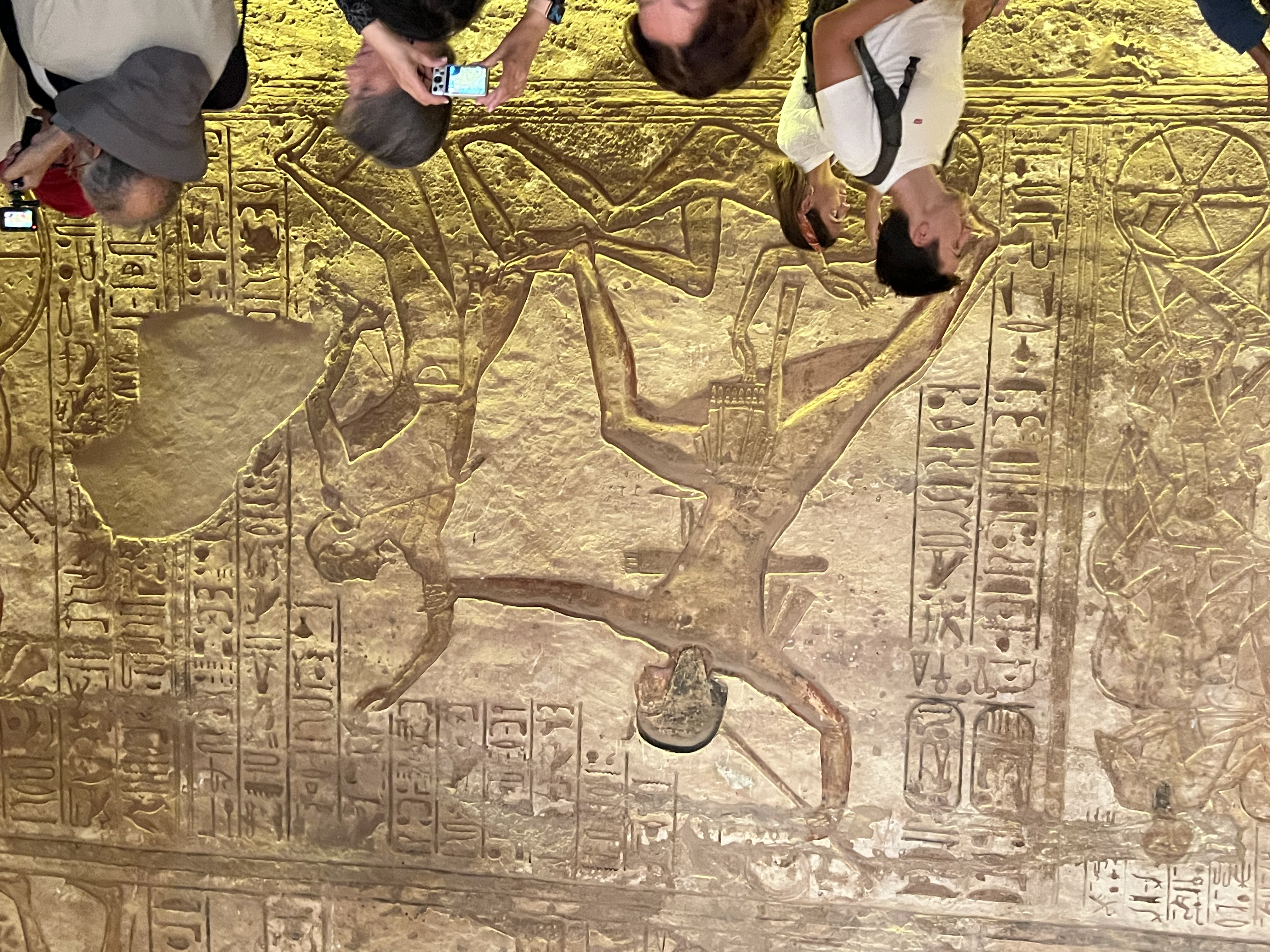
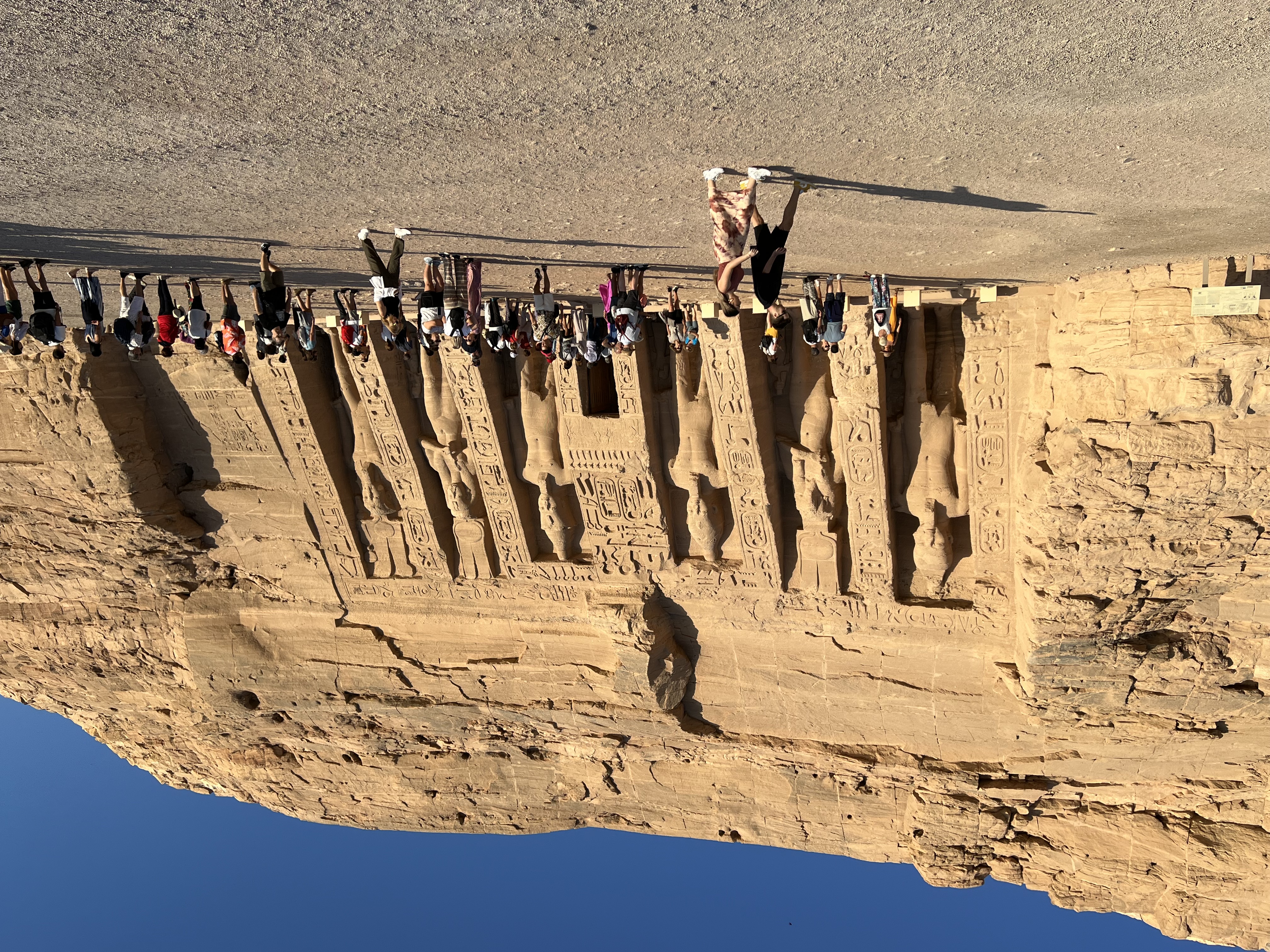
Ramesses II did not want for pride or ego, as he is featured more prominently than she among the giant figures that grace Queen Nefertari's Temple. Nefertari was an ethnic Nubian and his most beloved wife.
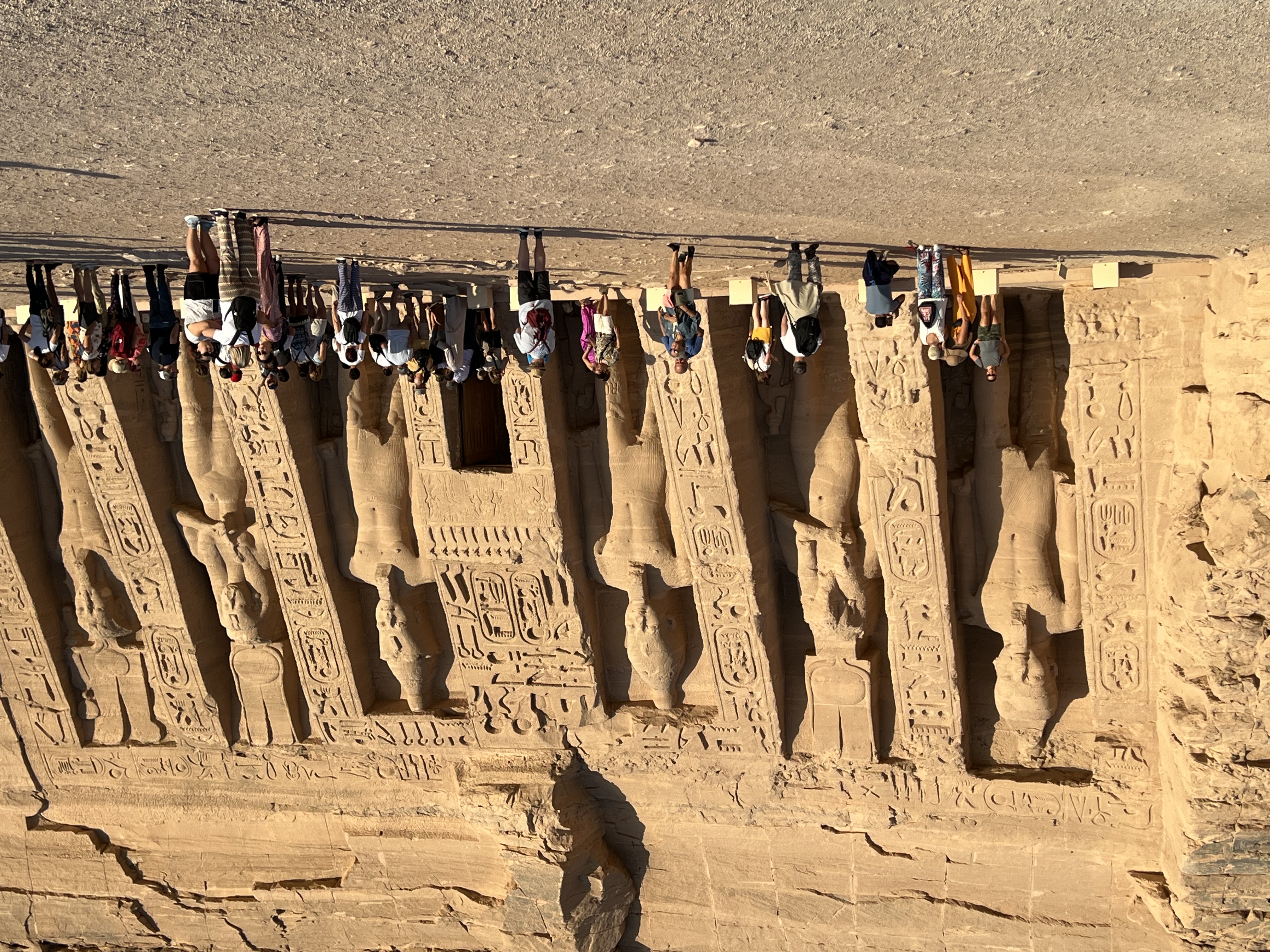
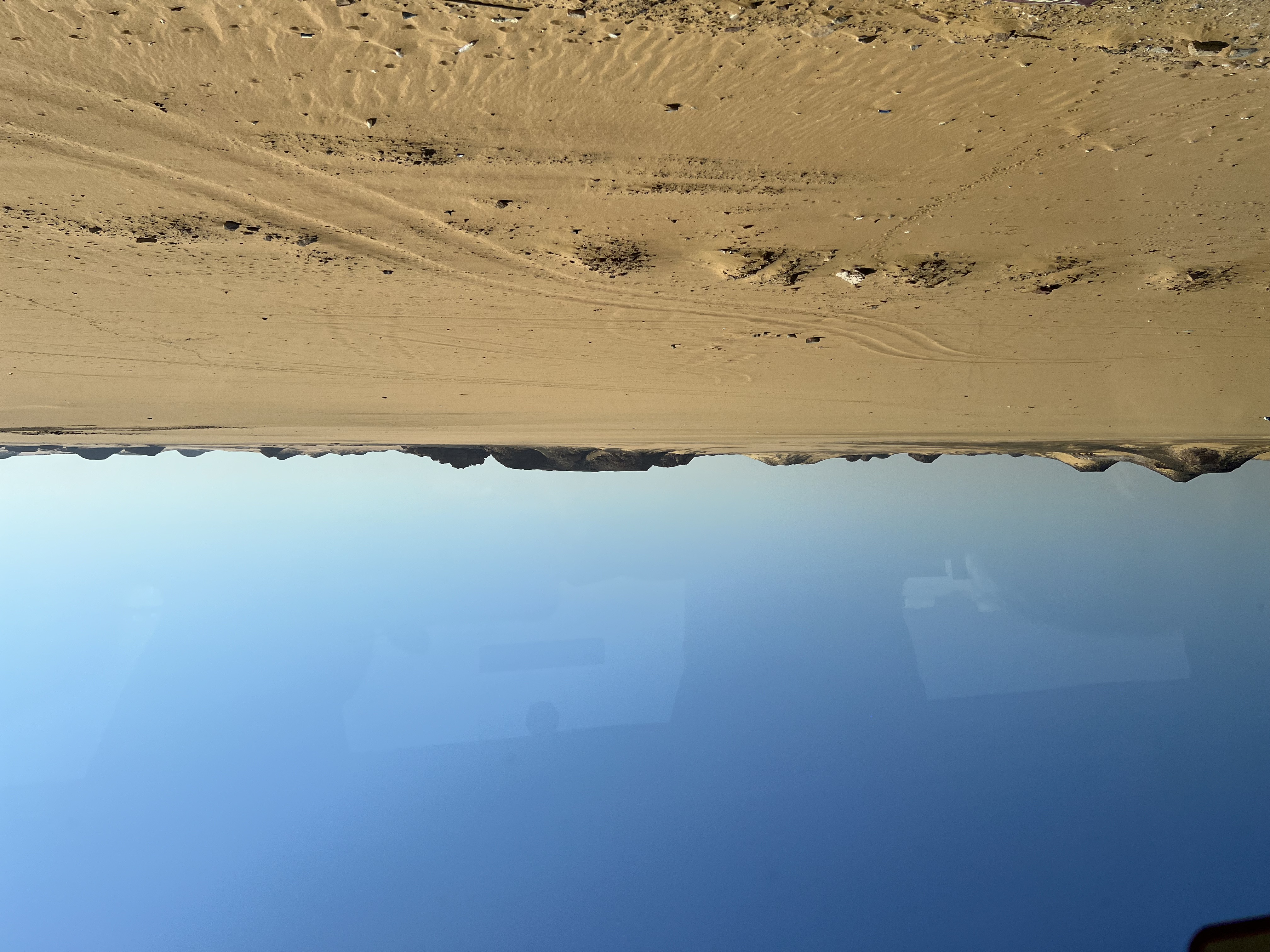
The trip from Aswan to Abu Simbel is about 200 kilometers over legit desert. Most of Egypt beyond the Nile Valley, is desert and uninhabited.
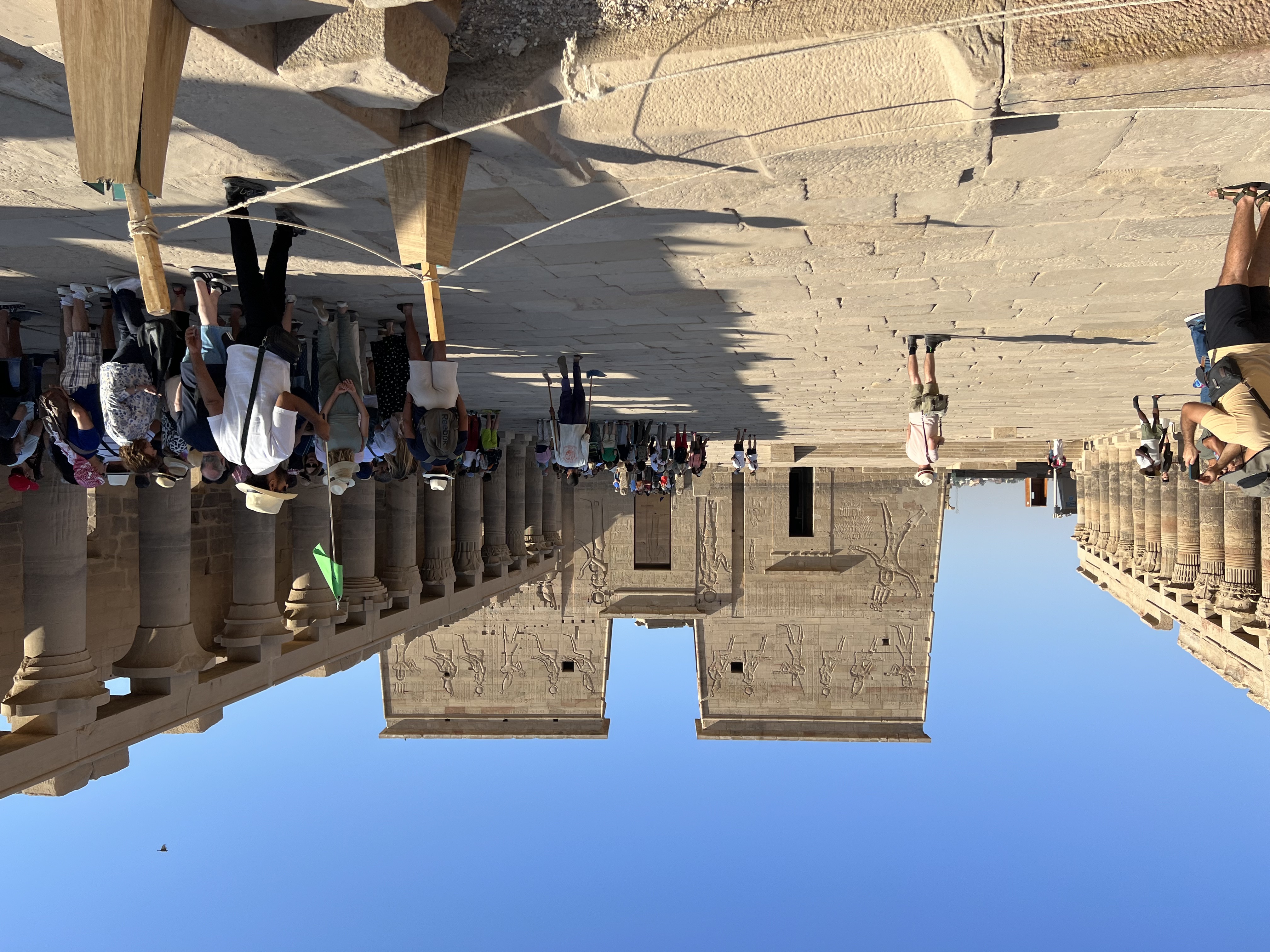
On the following day we went to the iconic Temple at Philae. This was another temple built during the waning years of Kemetic culture and influence. It was begun under Ptolemy II and completed when Egypt was under Roman rule. However historically and archeologically significant, this quite romantic temple complex impresses me more as a tourist destination and as documentation of the transition of Kemetic civilization into post-Kemetic, Coptic Egypt.
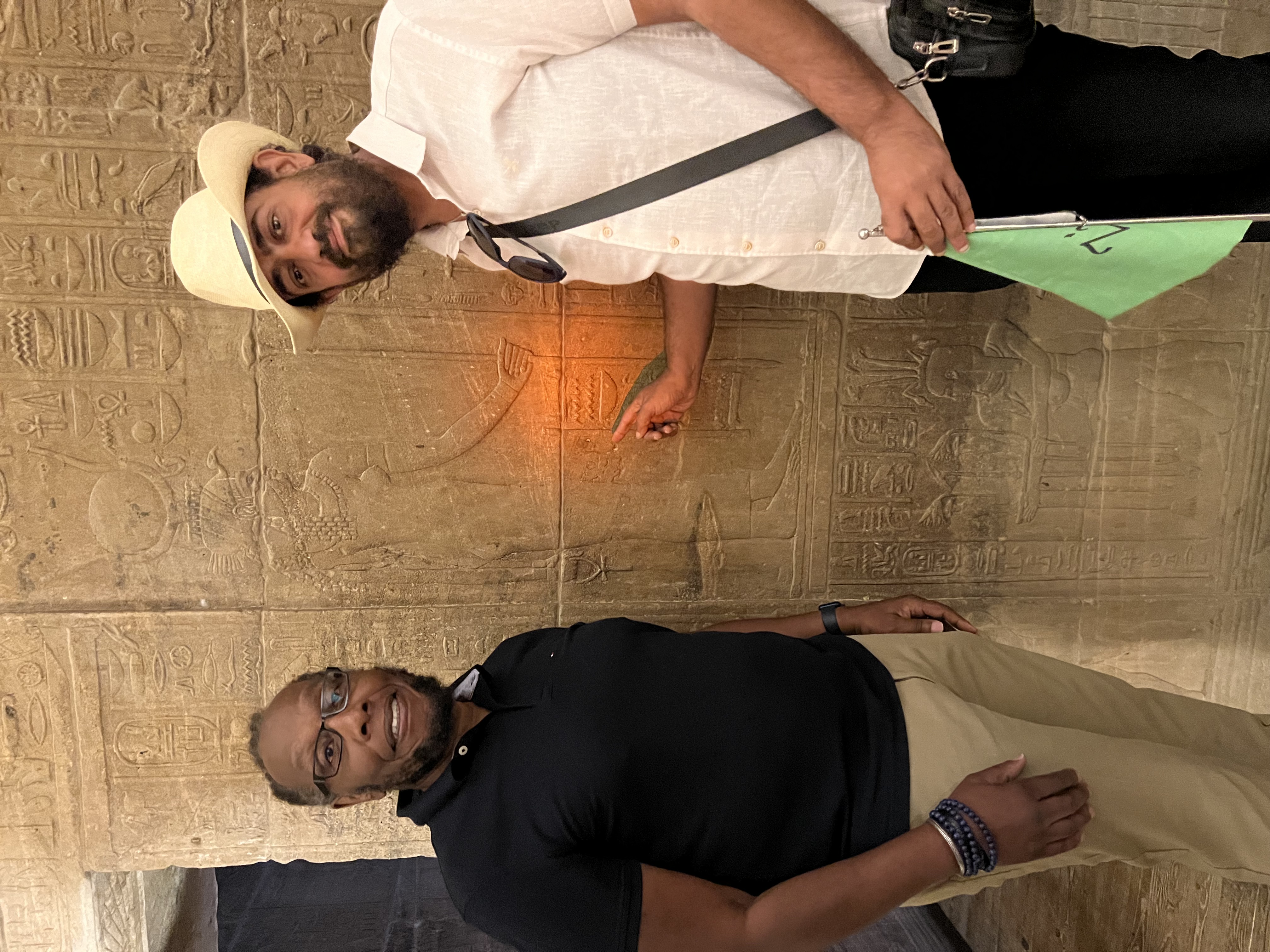
I asked "Zizo" to take a photo with me alongside one of several important finds he's made over the years. Here he's pointing to what is effectively grafitti in Demotic script. The author of the inscription is protesting the banning of traditional Egyptian religion by the then early Egyptian Christians. This is the last known inscription in the indigenous Egyptian language (hieroglyphic or Demotic) on a Kemetic monument or Temple.
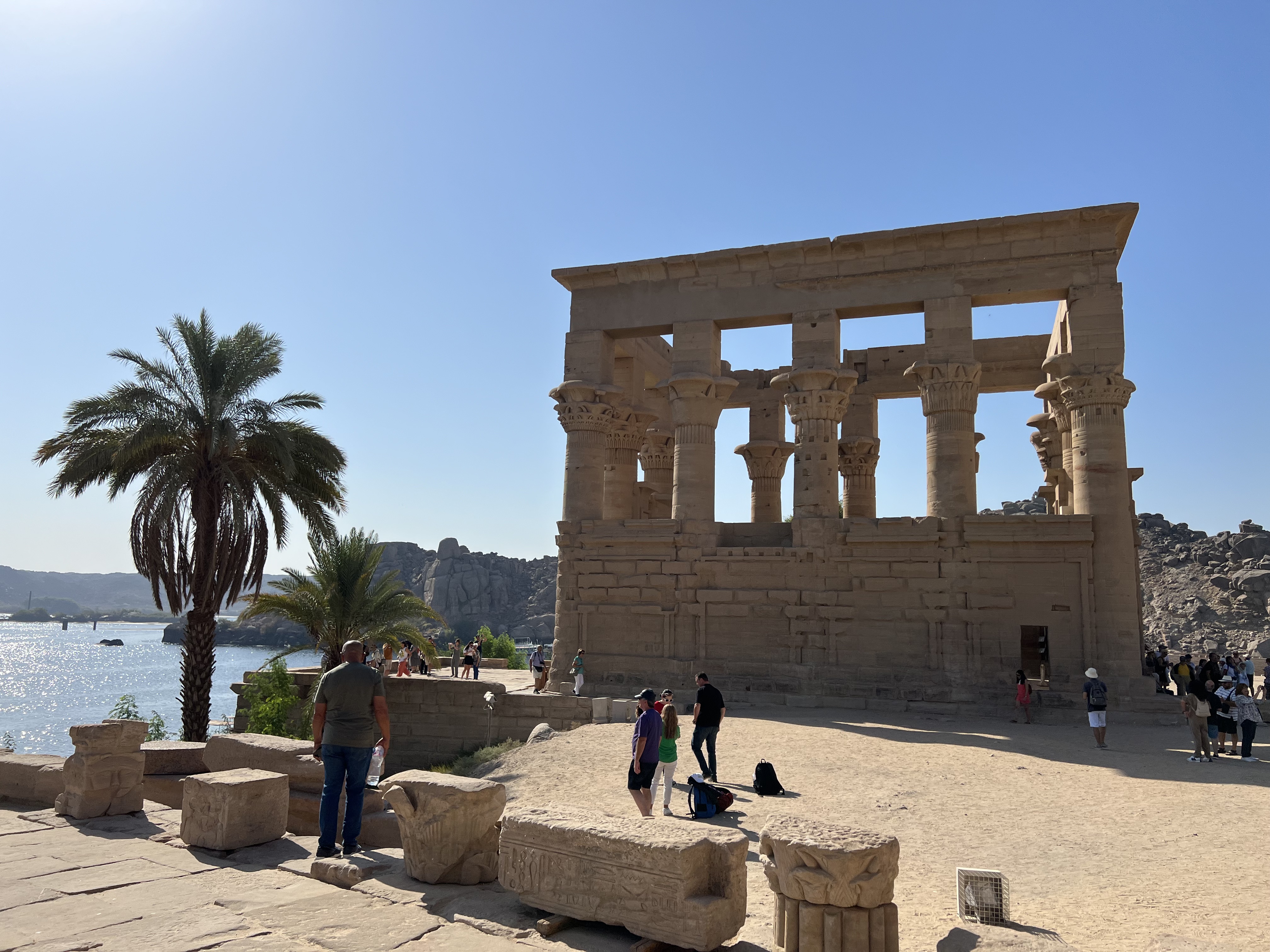
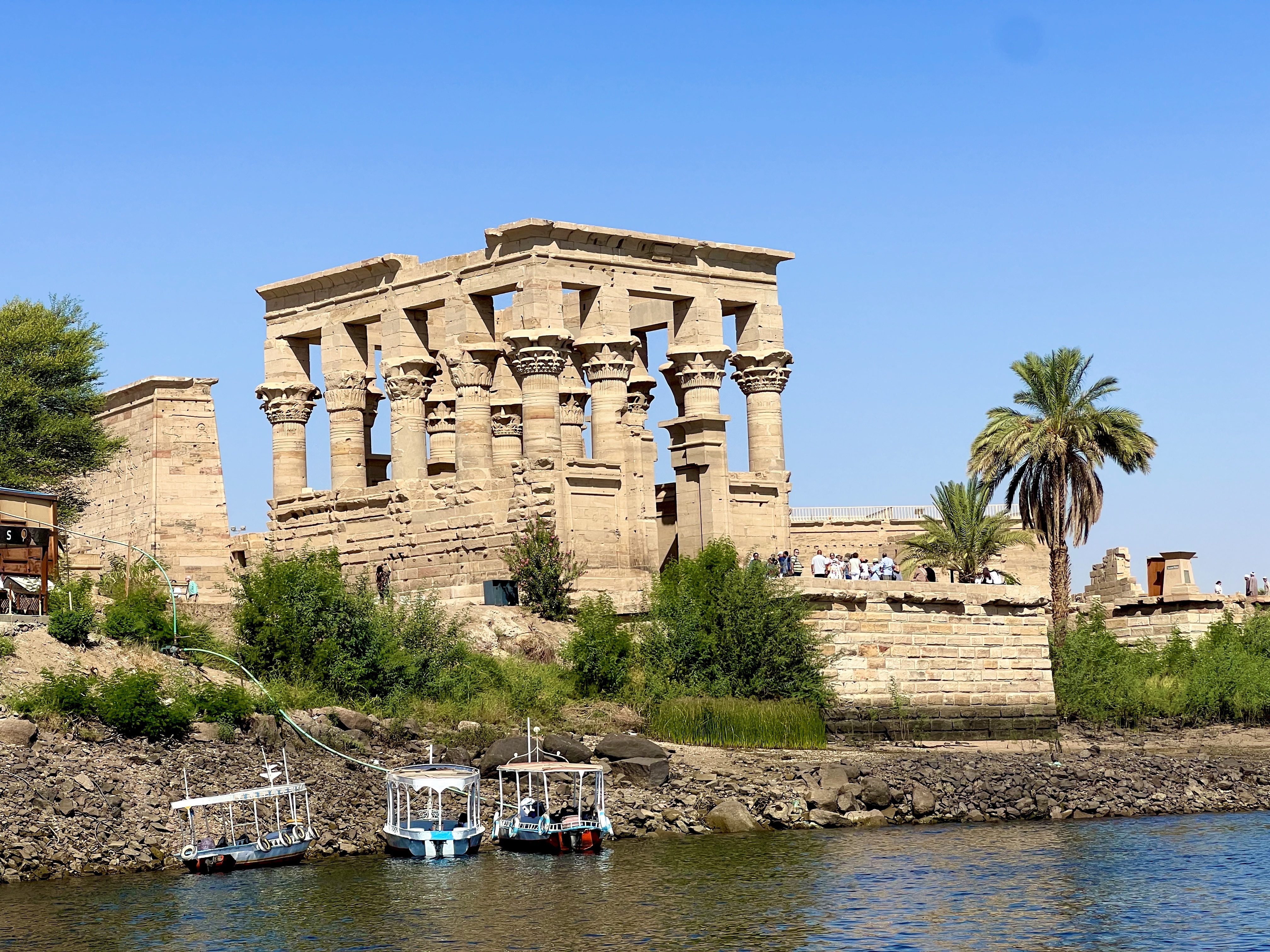

Our 20th Anniversary has been awesome.
- Gizo & Cairo - Luxor & Karnak - Hatshepsut Temple & Valley of the Kings - Edfu, Philae & Abu Simbel -